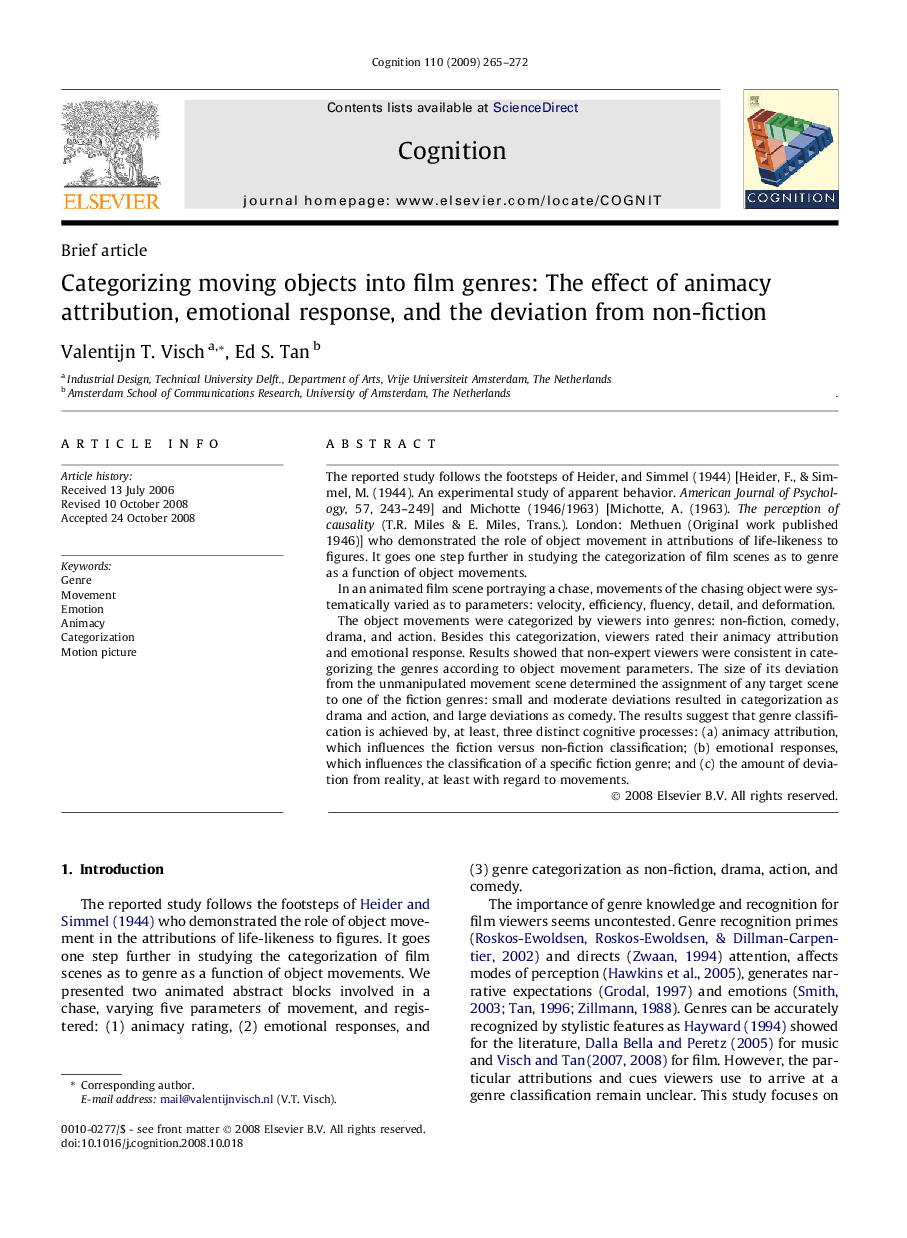| Article ID | Journal | Published Year | Pages | File Type |
|---|---|---|---|---|
| 927238 | Cognition | 2009 | 8 Pages |
The reported study follows the footsteps of Heider, and Simmel (1944) [Heider, F., & Simmel, M. (1944). An experimental study of apparent behavior. American Journal of Psychology, 57, 243–249] and Michotte (1946/1963) [Michotte, A. (1963). The perception of causality (T.R. Miles & E. Miles, Trans.). London: Methuen (Original work published 1946)] who demonstrated the role of object movement in attributions of life-likeness to figures. It goes one step further in studying the categorization of film scenes as to genre as a function of object movements.In an animated film scene portraying a chase, movements of the chasing object were systematically varied as to parameters: velocity, efficiency, fluency, detail, and deformation.The object movements were categorized by viewers into genres: non-fiction, comedy, drama, and action. Besides this categorization, viewers rated their animacy attribution and emotional response. Results showed that non-expert viewers were consistent in categorizing the genres according to object movement parameters. The size of its deviation from the unmanipulated movement scene determined the assignment of any target scene to one of the fiction genres: small and moderate deviations resulted in categorization as drama and action, and large deviations as comedy. The results suggest that genre classification is achieved by, at least, three distinct cognitive processes: (a) animacy attribution, which influences the fiction versus non-fiction classification; (b) emotional responses, which influences the classification of a specific fiction genre; and (c) the amount of deviation from reality, at least with regard to movements.
